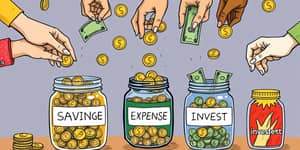
Our relationship with money extends far beyond spreadsheets and calculators.
It is shaped by emotions, experiences, and hidden biases that influence every financial move we make.
At its core, money functions as a medium of exchange, store of value, and unit of account.
Yet, for many, it carries symbolic and emotional meaning—representing security, status, autonomy, or even deep-seated anxiety and shame.
Understanding that money is deeply emotional and psychological allows us to recognize why rational calculations often give way to impulse and fear.
Behavioral finance reveals how feelings can override logic, leading to decisions that might undermine long-term prosperity.
Our brains use shortcuts, or heuristics, that can mislead financial judgment.
Other biases such as the sunk cost fallacy and present bias and scarcity mentality further distort choices, tying us to past commitments or immediate shortages instead of long-term goals.
Childhood experiences with money lay the groundwork for adult financial attitudes.
Parental messaging—whether emphasizing thrift or encouraging spending—shapes one’s instinctive responses to earning, saving, and debt.
Frameworks like the Money Attitude Questionnaire dissect these patterns across emotional, cognitive, and behavioral dimensions, revealing how early lessons persist into adulthood.
Culture and societal dynamics also play a pivotal role. Economic crises, family values, and national narratives about wealth can all leave lasting impressions on our financial psyche.
Numerous studies highlight the link between money worries and psychological distress.
A 2018 national survey of 22,682 U.S. adults found that increasing financial anxiety directly correlates with higher levels of depression and stress.
Compulsive behaviors can emerge as well. For some, the pursuit of wealth mimics addiction, straining relationships and eroding well-being.
Insights from behavioral economics offer tools to counteract our financial blind spots.
Building a constructive financial attitude requires both awareness and action.
Start by monitoring personal spending patterns and identifying triggers—such as stress or social comparison—that lead to poor choices. This mindful awareness of spending triggers is the first step toward change.
Modern financial coaches integrate emotional guidance with traditional planning, helping individuals shift from a scarcity to growth mindset.
Resilience grows with education. Books like Predictably Irrational by Dan Ariely and Nudge by Richard Thaler demystify biases and offer practical frameworks for smarter decisions.
For deeper exploration of these ideas, consider:
Predictably Irrational (Dan Ariely) examines the hidden forces shaping our decisions.
Nudge (Richard Thaler and Cass Sunstein) provides a blueprint for designing choices that improve lives.
Misbehaving (Richard Thaler) chronicles the evolution of behavioral economics in actionable terms.
Dollars & Sense (Dan Ariely, Jeff Kreisler) blends research with real-world scenarios to illuminate everyday money behaviors.
Academic tools such as the Monetary Intelligence Scale and the Money-Motivation Scale offer structured assessments for personal growth.
By acknowledging the interplay of emotion, bias, and societal influence, we can craft financial strategies that honor both the heart and the head. Embracing these insights paves the way toward lasting security and meaningful prosperity, proving that understanding The Psychology of Money truly goes beyond the numbers.
References













